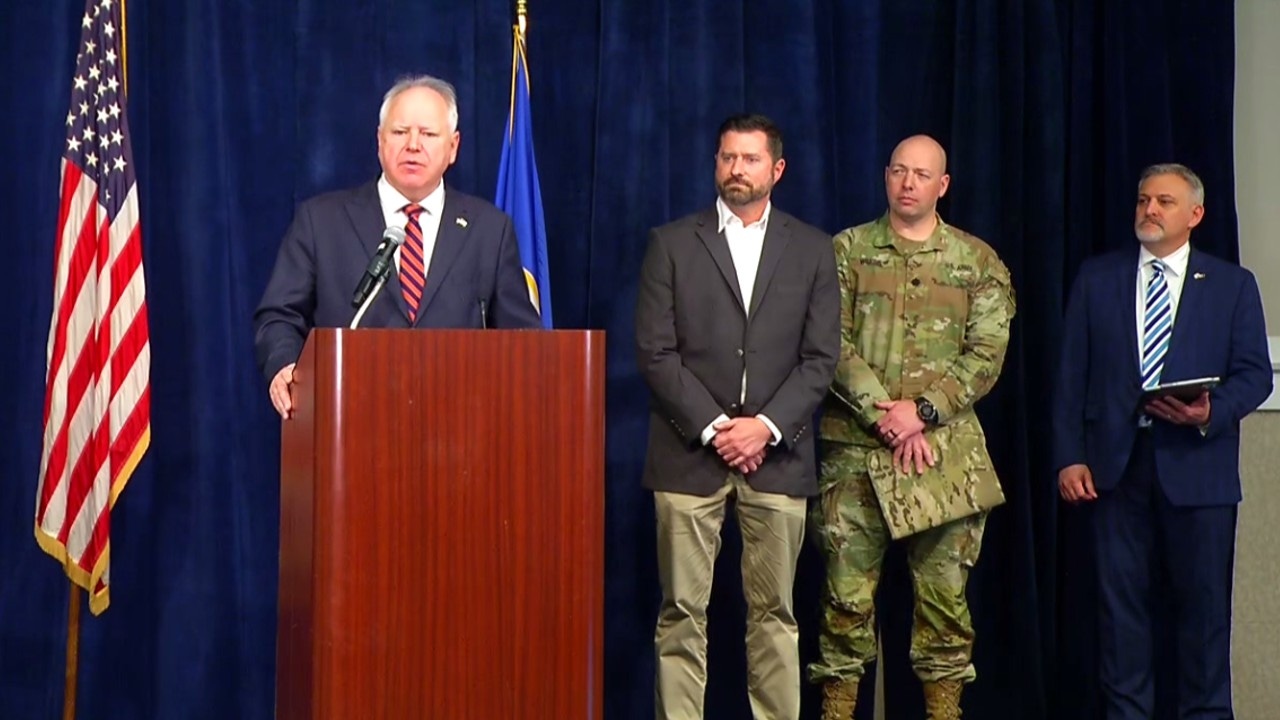Walz, officials provide latest update on flooding outlook
State and federal partners joined Gov. Tim Walz Tuesday to provide the latest update on the state’s flooding outlook.
Walz was joined by Twin Cities National Weather Service Meteorologist in Charge Dan Hawblitzel, U.S. Army Corps of Engineers Deputy Commander Lt. Col. Rob Wilkins and Homeland Security and Emergency Management Interim Director Kevin Reed.
State officials said last week that Minnesota was entering what is expected to be the peak of spring flooding. Drier weather appears to be headed toward the region, which would allow water levels to start falling if there isn’t any major rainfall this week.
Tuesday, Hawblitzel noted most of the rivers around the state have either crested already or will in the next couple of days. Barring any substantial rain this weekend, the situation should improve across the state.
The Army Corps of Engineers is still providing support to local communities and says nine of their lock and dam facilities have closed to navigation traffic due to high water.

Gov. Tim Walz speaks during a press conference to provide an update on the state's flood outlook on April 25, 2023. (KSTP-TV)
Officials also noted it’s still too early to make any damage estimates because full assessments can’t be done until water has fully receded. However, Reed noted St. Louis County likely already has around $2 million in damage from flooding.
The turn towards the end of flooding season comes as a relief for river communities that have worked hard to keep flood waters at bay — they’ll be keeping a close eye as more rain is expected in the forecast, but most are in the clear.
“We’ve gotten through most of the unknowns because most of the rivers have now reached the crest or they’re real close to it,” Craig Schmidt, senior service hydrologist with the National Weather Service Twin Cities, said.
“We hit major flood stage at 12 to 15 river locations this year,” he added.
He also says one of the key reasons there hasn’t been much severe damage reported thus far is because of the mitigation efforts currently in place and those established over the years.
“With the same kind of flood levels we would see homes underwater, we would see whole streets flooded with all the homes along them would be underwater, and that sort of thing,” Schmidt said of the possibilities with the mitigation.
One city that’s a prime example of that is Delano, where city leaders say the Crow River likely crested and is on its way down.
“We’re lucky to have this here,” Phil Kern, Delano’s city administrator, said about the Crow River. “Along with that, Mother Nature is in control.”
Kern says the city has been aggressive with flood mitigation projects over the last two decades. From a temporary flood wall that’s quickly bolted in place along the river, to building pumping stations, improving stormwater systems and strengthening more than a mile of their levee, Kern said the city is sitting well.
“I had a resident last week, who had to move out of her house in 2014 because of floodwaters, [tell] me that she doesn’t have a drop of water in her basement this year,” Kern added.
Delano is not alone, the Minnesota Department of Natural Resources (DNR) — which works alongside river communities across the state to help plan and build flood mitigation — says this year has not been bad for flood damage so far.
“The mitigation actions that have been undertaken at the state level and local level have been working,” Matt Bauman, with the DNR, said, adding: “We’re really encouraged by that.”
RELATED: Ramsey County declares local emergency over flooding concerns
RELATED: Cities continue to prepare for flooding as rain, snow forecast for end of week
RELATED: City crews in Delano install a metal floodwall to keep the swollen Crow River in check
For the most current update on spring flooding, CLICK HERE.